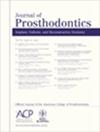Craniofacial anatomical determinants of pediatric sleep-disordered breathing: A comprehensive review
Abstract
Purpose
This narrative review aims to elucidate the anatomical features of sleep-disordered breathing (SDB) in children. By identifying key structures and intervening proactively, we seek to alter craniofacial growth patterns and improve functional outcomes for SDB children.
Methods
The literature on pediatric sleep-disordered breathing (PSDB), pediatric obstructive sleep apnea (OSA), anatomical predispositions, and the relationship between skeletal deformity and PSDB was examined using PubMed and Google Scholar databases, covering studies from 2006 to 2024.
Results
Forty relevant articles were reviewed, focusing on craniofacial characteristics associated with PSDB. The etiology of PSDB is multifactorial, with adenoid and palatal tonsil enlargement being the most common cause. While adenotonsillectomy is recommended as the primary treatment, residual SDB may result in craniofacial skeletal deformities contributing to upper airway constriction. Typical craniofacial phenotypes of SDB include excessive vertical growth and constriction of the maxilla, a retruded mandible, and posterior rotation, known as a Class II hyperdivergent pattern. Conversely, Class III with an underdeveloped maxilla shows a relatively lower risk for SDB due to reduced nasal cavity and nasopharyngeal airway volumes. Transverse maxillary constriction with a high, deep palatal vault is a significant risk factor. Additionally, nasal obstruction and low tongue posture, with or without a short lingual frenulum, are identified as craniofacial risk factors for SDB development in children.
Conclusion
Early diagnosis and intervention are critical in managing PSDB. Dentists, through screening and early treatment, can significantly influence craniofacial growth and health outcomes. A multidisciplinary approach is essential for effective management, improving the quality of life and long-term health of affected children.


 求助内容:
求助内容: 应助结果提醒方式:
应助结果提醒方式:


